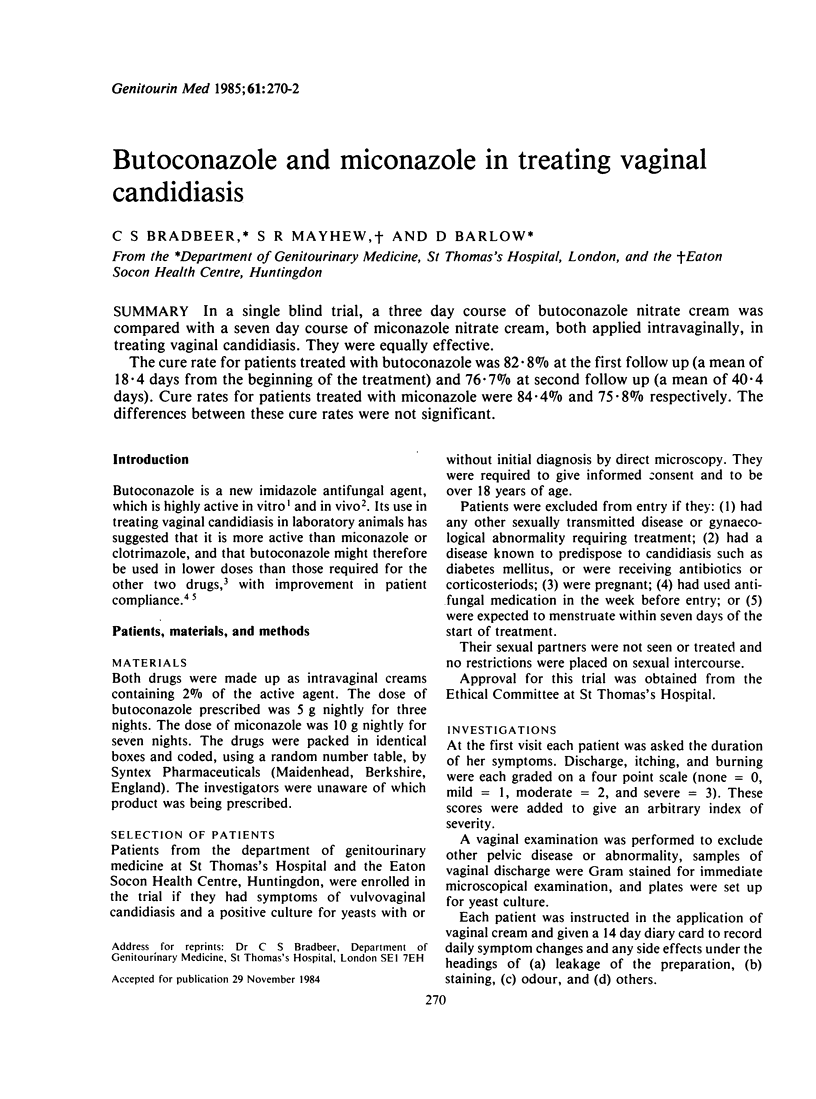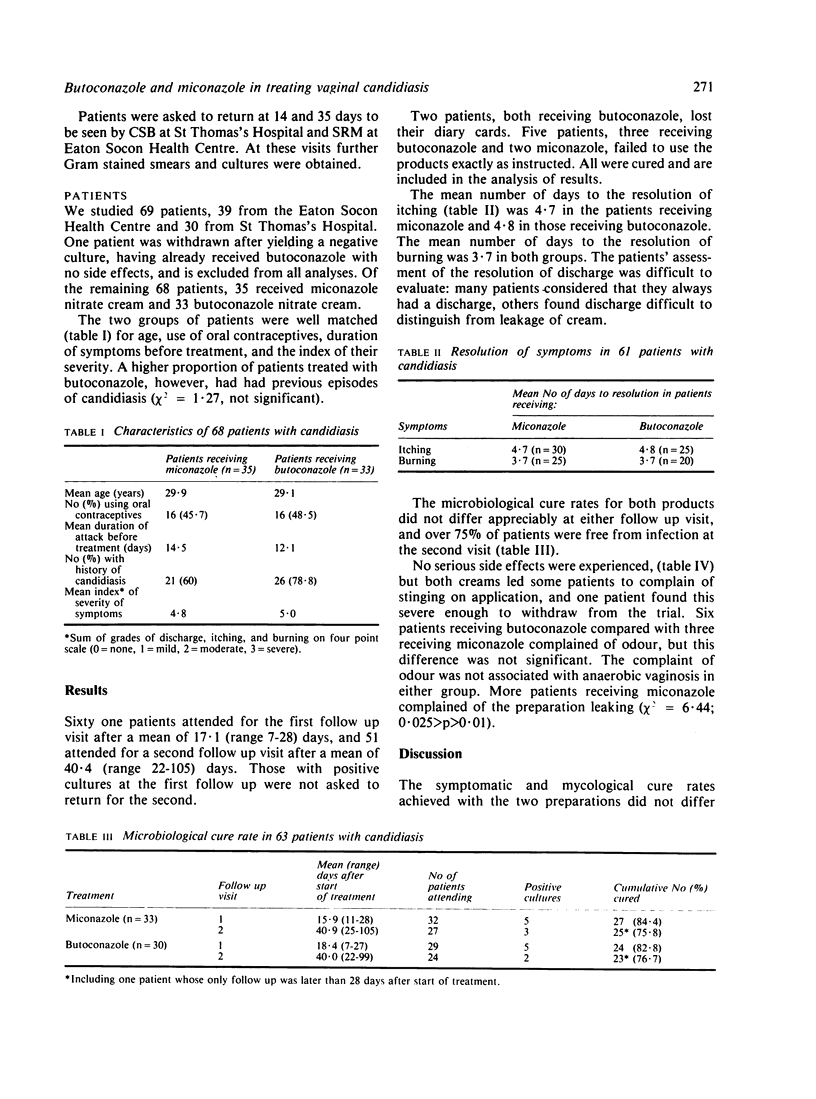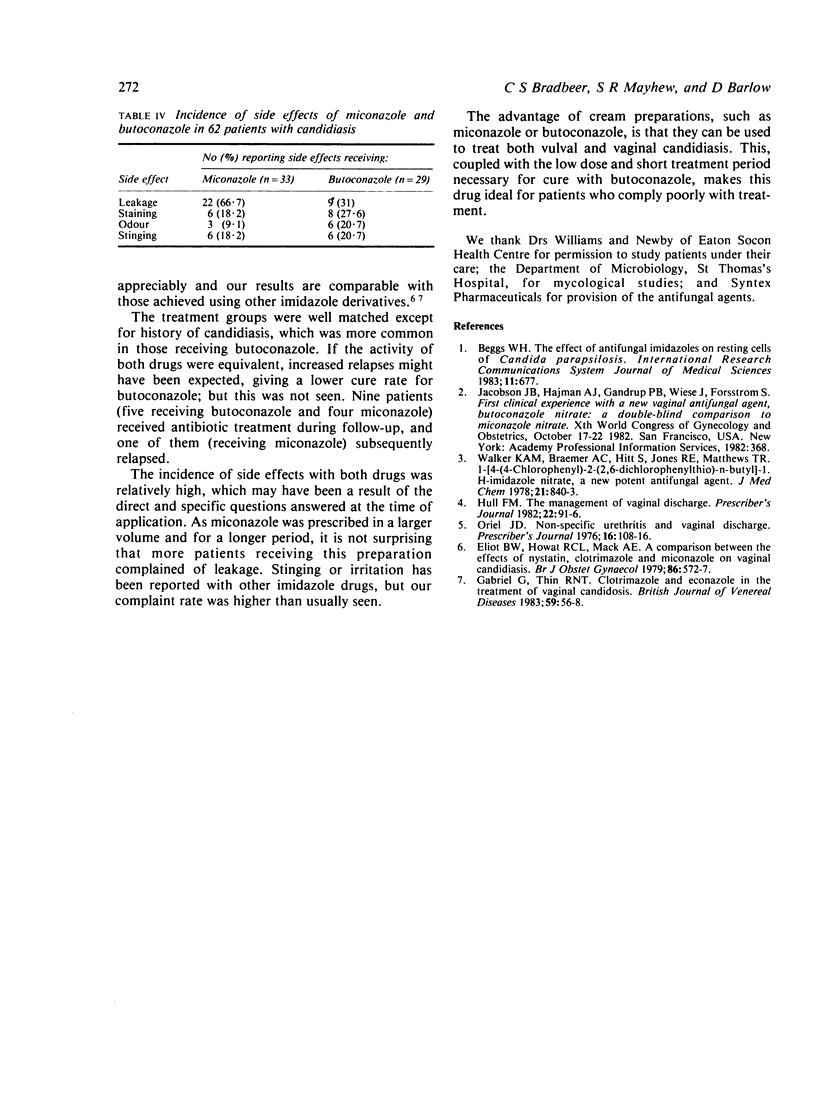Abstract
In a single blind trial, a three day course of butoconazole nitrate cream was compared with a seven day course of miconazole nitrate cream, both applied intravaginally, in treating vaginal candidiasis. They were equally effective. The cure rate for patients treated with butoconazole was 82.8% at the first follow up (a mean of 18.4 days from the beginning of the treatment) and 76.7% at second follow up (a mean of 40.4 days). Cure rates for patients treated with miconazole were 84.4% and 75.8% respectively. The differences between these cure rates were not significant.
Full text
PDF


Selected References
These references are in PubMed. This may not be the complete list of references from this article.
- Eliot B. W., Howat R. C., Mack A. E. A comparison between the effects of nystatin, clotrimazole and miconazole on vaginal candidiasis. Br J Obstet Gynaecol. 1979 Jul;86(7):572–577. doi: 10.1111/j.1471-0528.1979.tb10812.x. [DOI] [PubMed] [Google Scholar]
- Gabriel G., Thin R. N. Clotrimazole and econazole in the treatment of vaginal candidosis. A single-blind comparison. Br J Vener Dis. 1983 Feb;59(1):56–58. doi: 10.1136/sti.59.1.56. [DOI] [PMC free article] [PubMed] [Google Scholar]
- Walker K. A., Braemer A. C., Hitt S., Jones R. E., Matthews T. R. 1-[4-(4-Chlorophenyl)-2-(2,6-dichlorophenylthio)-n-butyl]-1H-imidazole nitrate, a new potent antifungal agent. J Med Chem. 1978 Aug;21(8):840–843. doi: 10.1021/jm00206a028. [DOI] [PubMed] [Google Scholar]


